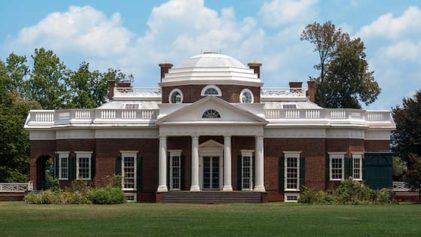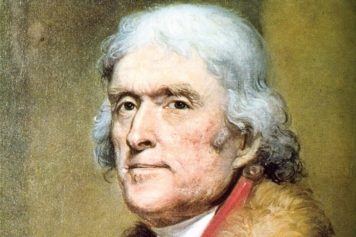
Thomas Jefferson owned 607 slaves during his lifetime, including Sally Hemings who resided at Monticello.
Thomas Jefferson’s plantation is finally acknowledging his ties to enslaved woman Sally Hemings with a multimillion dollar restoration.
Hemings reportedly resided in a room close to the former president at his Virginia home known as Monticello, living as his mistress for decades. The Washington Post reported a $35 million renovation is currently taking place to restore Hemings’ room that was converted into a restroom since 1941 to what it used to be in the 1700s.
“It will portray her outside of the mystery,” Thomas Jefferson Foundation’s Public Historian of Slavery and African-American Life Niya Bates told the newspaper. “She was a mother, a sister, an ancestor for her descendants and [the room’s presentation] will really just shape her as a person and give her a presence outside of the wonder of their relationship.”
At Monticello, Hemings will be brought to life by furniture and artifacts reflective of the time period, including ceramics and bone toothbrushes recovered from the estate. The once-bustling Mulberry Row, where several of the plantation’s enslaved people labored in workshops, is also being reconstructed. It includes an iron workshop and a rebuilt slave cabin where Hemings’ brother John Hemmings, who spelled his name with two M’s, may have lived with his wife.
“Visitors will come up here and understand that there was no place on this mountaintop that slavery wasn’t,” Monticello historian Christa Dierksheide said. “Thomas Jefferson was surrounded by people, and the vast majority of those people were enslaved.”
“You’re in the home of the person who wrote the Declaration of Independence, who criticized slavery but was a slaveholder,” said “The Hemingses of Monticello: An American Family” author and Harvard professor Annette Gordon-Reed.
She added the Monticello’s story is “about the complicated nature of America’s founding.”
Monticello is only now acknowledging Jefferson’s lengthy liaison with Hemings, which reflected the frequent rape of many enslaved women by white slave owners during the period. Jefferson and Hemings’ association was scandalous at the time and for decades his estate did not acknowledge her, possibly out of embarrassment. Jefferson hardly did either, even though he carefully tracked the activities of the people he enslaved for 40 years there was very little recorded about Hemings. Currently, many historians believe the widowed president was the father of Hemings’ six children, although Jefferson-associated organizations doubt the paternity of the four children who lived to adulthood.
There are no known images of Hemings, according to The Washington Post. Historians agree that Jefferson inherited her family from his father-in-law when she was a baby. Growing up, she was a seamstress and worked as Jefferson’s chambermaid for a period. In 1787, Jefferson had 14-year-old Hemings accompany his daughter to Paris while he discussed trade agreements and one of Hemings’ sons said France was where his mother’s personal relationship with Jefferson started.


